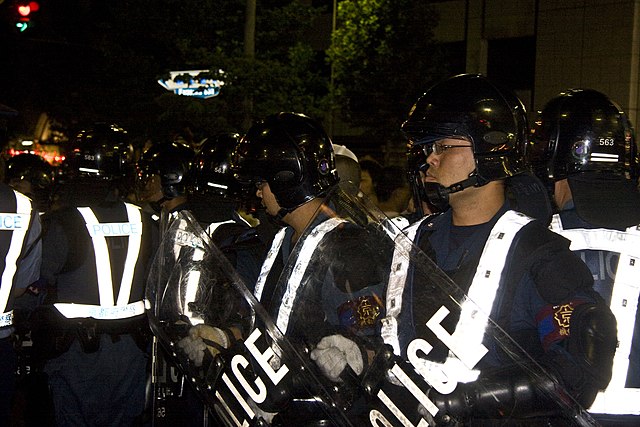Crowd collapses and crushes
Crowd collapses and crowd crushes are catastrophic incidents that can occur when a body of people becomes dangerously overcrowded. When numbers are up to about five people per square meter, the environment may feel cramped but manageable; when numbers reach between eight and ten people per square meter, individuals become pressed against each other and may be swept along against their will by the motion of the crowd. Under these conditions, the crowd may undergo a progressive collapse where the pressure pushes people off their feet, resulting in people being trampled or crushed by the weight of other people falling on top of them. At even higher densities, the pressure on each individual can cause them to be crushed or asphyxiated while still upright.
245 people died in the Lyon bridge disaster of 1711, when a large crowd returning from a festival on one side of the bridge found their way blocked by a collision between a carriage and a cart, and became trapped
Crowd control is a public security practice in which large crowds are managed in order to prevent the outbreak of crowd crushes, affray, fights involving drunk and disorderly people or riots. Crowd crushes in particular can cause many hundreds of fatalities. Effective crowd management is about managing expected and unexpected crowd occurrences. Crowd control can involve privately hired security guards as well as police officers. Crowd control is often used at large, public gatherings like street fairs, music festivals, stadiums and public demonstrations. At some events, security guards and police use metal detectors and sniffer dogs to prevent weapons and drugs being brought into a venue.
During the 2014 London Marathon, a police officer keeps spectators behind a fence, while first aiders patrol
Garda Síochána officers on guard duty at a cleared street in Dublin, Ireland when President Obama visited the country in 2011.
Kyoto Prefectural Riot Police Unit officers on duty during the Gion Matsuri 2008 festival.




